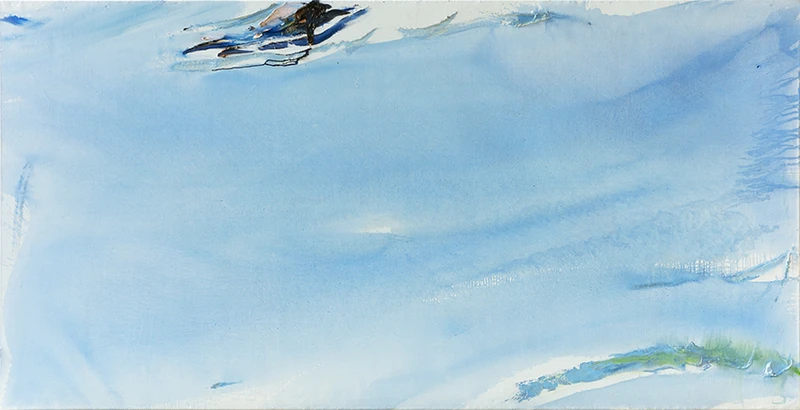Olivier Debré
1 Jun-4 Aug 2023
PV 6 Jun 2023, 6-8pm


Simon Lee Gallery is pleased to present its inaugural exhibition of works by French lyrical abstract painter Olivier Debré (1920–1999).
Spanning two gallery floors, the exhibition explores the artist’s fervent colour-field paintings produced from 1980 to 1999, the pinnacle of Debré’s practice, when he deftly captured the emotional experiences of natural phenomena and the outside world.
It was after witnessing the horrors of the Second World War that Debré pivoted away from his architectural training at the École des Beaux Arts in Paris to focus on painting, seeking inspiration and refuge in the natural world. His visual language and painterly approach drew on the immediacy of working en plein air, and he coined the term ‘signes’ to reference the primordial mark-making that characterises his spontaneous responses to his environment.
The exhibition’s canvases, made by Debré in the latter part of his career, evidence his desire to capture the power and wonder of the sites he encountered by the use of luminescent, fluid backgrounds punctuated with strong accents of colour, which played an increasingly important role in the expressive quality of Debré’s works following 1947, putting him in conversation with artists such as Jules Olitski and particularly Mark Rothko, who he befriended in New York in the 1950s.
Debré’s harnessing of colour is evident in Bleu Coule de Loire, Touraine (1988), a work that will be on view. Here, Debré takes influence from the gushing currents of the Loire river – a muse for the artist, who travelled extensively but who called Touraine, in the Loire Valley, home. Soft washes of powder blue are interjected with impasto ripples of dark green and ultramarine, resulting in a dynamic composition that exudes the life of the river. Debré described of his process: “When I am like the wind, like the rain, like the running water, then I am part of nature and nature passes through me,” an approach that can be understood through the works that form this exhibition.
The sense of touch also became key to Debré’s practice as he shifted to painting canvases on the floor, moving over them like part of the landscape as they took shape. The sights and sounds of places around the world – from the Imperial Palace of Tokyo to Beijing’s Forbidden City, the Yemeni desert, and the fjords of Norway – continued to feed his creativity.
These works of the 1980s and ‘90s contrast the artist’s early monochrome works, which were informed by the prismatic compositions of Picasso, who Debré visited many times at his studio at Rue des Grands-Augustins in 1942, and which convey the war’s destruction. Instead, the exhibition’s paintings signal a rebirth in their vibrancy and rich hues, conjuring the universal human sensations that are provoked by the relentless life force of nature, while evincing an artist in his creative prime.